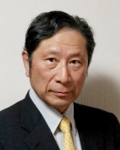Challenges of Plasma Science and Technology for Green Semiconductor Manufacturing

Prof. Masaru Hori
Professor, Director,
Center for Low-temperature Plasma Sciences (cLPS), Nagoya University
Abstract
In order to realize a sustainable society, all manufacturing technologies must achieve goals such as reducing CO2 emissions and zero greenhouse gas emissions.
Plasma technology is used in more than 70% of large-scale integrated circuit manufacturing, and the energy emitted from plasma processes is enormous. Moore’s Law has made it possible to manufacture low-power devices through miniaturization, but new guidelines are needed to incorporate environmental factors into manufacturing technology. On the other hand, this trend should be viewed as an opportunity to revolutionize conventional miniaturization and 3D packaging, and to further advance the plasma process that has supported semiconductor manufacturing technology and innovate it as a new manufacturing technology. This tutorial will introduce the possibility of environmental innovation in semiconductor manufacturing through the challenge of advanced plasma science and technology for green semiconductor manufacturing.
Plasma technology is used in more than 70% of large-scale integrated circuit manufacturing, and the energy emitted from plasma processes is enormous. Moore’s Law has made it possible to manufacture low-power devices through miniaturization, but new guidelines are needed to incorporate environmental factors into manufacturing technology. On the other hand, this trend should be viewed as an opportunity to revolutionize conventional miniaturization and 3D packaging, and to further advance the plasma process that has supported semiconductor manufacturing technology and innovate it as a new manufacturing technology. This tutorial will introduce the possibility of environmental innovation in semiconductor manufacturing through the challenge of advanced plasma science and technology for green semiconductor manufacturing.
CV
Masaru Hori received his B.S. from Waseda University in 1981, M.S. from Waseda University in 1983, and Ph.D. from Nagoya University in 1986. He worked as a researcher at Toshiba Corporation from 1986 to 1992 and was research associate, assistant professor and associate professor at Nagoya University from 1992 to 2004. He was a Research Fellow at the Cavendish Laboratory, University of Cambridge, UK, in 1997, and has been a Professor at Nagoya University since 2004. In 2009, Director of Plasma Nanotechnology Research Center, Nagoya University, In 2013, Director of Plasma Medical Science International Innovation Center, Nagoya University, and Director of Center for Low-temperature Plasma Sciences from 2019.
His current research interests include plasma nanotechnology and life science. He is a Fellow of the Japan Society of Applied Physics. He has received the Commendation for Science and Technology by the Minister of Education, Culture, Sports, Science and Technology (2011), the Commendation for Science and Technology Policy by the Minister of Industry-Academia Collaboration (2011), the 14th Plasma Material Science Award by JSPS (2012), the Plasma Medicine Award (2018), the KT Rie Award (2019), the DPS Nishizawa Award (2021) etc. He is the recipient of the Medal with Purple Ribbon in 2022.
His current research interests include plasma nanotechnology and life science. He is a Fellow of the Japan Society of Applied Physics. He has received the Commendation for Science and Technology by the Minister of Education, Culture, Sports, Science and Technology (2011), the Commendation for Science and Technology Policy by the Minister of Industry-Academia Collaboration (2011), the 14th Plasma Material Science Award by JSPS (2012), the Plasma Medicine Award (2018), the KT Rie Award (2019), the DPS Nishizawa Award (2021) etc. He is the recipient of the Medal with Purple Ribbon in 2022.
Atomic-level control of plasma processing toward sub-nm node technologies

Prof. Satoshi Hamaguchi
Professor,
Center for Atomic and Molecular Technologies, Osaka University
Abstract
As the sizes of the semiconductor devices are approaching atomic sizes, the device structures have been rapidly transformed from conventional two-dimensional (2D) structures to complex 3D structures, possibly made of unconventional materials. Such changes in device structures are now posing great challenges to processing technologies. For example, plasma etching and deposition technologies allow the formation of device structures far smaller than what EUV lithography can define via Self-Aligned Double Patterning (SADP) and Self-Aligned Quadruple Patterning (SAQP). This exemplifies the importance of plasma processing in the manufacturing of leading-edge semiconductor devices. In this presentation, the latest development of etching and deposition technologies with atomic-scale accuracy, i.e., atomic-layer etching (ALE) and atomic-layer deposition (ALD) will be reviewed. The development of such new processes typically relies on a large number of trials and errors in experiments but data-driven approaches to these problems, such as the use of machine learning, may make the process development more efficient. This possibility will be also discussed. Finally, some thought will be given to the decarbonization of semiconductor processing, another urgent issue in the industry.
CV
Satoshi Hamaguchi, Ph.D., has been Professor of Engineering at the Center for Atomic and Molecular Technologies, Graduate School of Engineering, Osaka University, Osaka, Japan, since 2004. His research interest includes plasma processing for semiconductor processing, plasma medicine, nuclear fusion, and data-driven plasma science.
Prior to joining Osaka University, Dr. Hamaguchi was Associate Professor of Energy Science, Graduate School of Energy Sciences, Kyoto University, Kyoto, Japan, from 1998 to 2004, Research Staff Member of T. J. Watson Research Center, IBM Research Division, IBM Co. at Yorktown Heights, New York, USA, from 1990 to 1998, and Research Fellow at the Institute of Fusion Studies, University of Texas, Austin, Texas, USA, from 1988 to 1990.
Dr. Hamaguchi received his M. Sci and Ph.D. degrees in mathematics from Courant Institute of Mathematical Sciences, Department of Mathematics, New York University, New York, USA, in 1986 and 1988, B. Sc. an M. Sci in physics from the Department of Physics, University of Tokyo, Tokyo, Japan, in 1982 and 1984. He also holds a Ph. D. in physics from the University of Tokyo. He is a Fellow of American Vacuum Society, American Physical Society, and Japan Society of Applied Physics.
Prior to joining Osaka University, Dr. Hamaguchi was Associate Professor of Energy Science, Graduate School of Energy Sciences, Kyoto University, Kyoto, Japan, from 1998 to 2004, Research Staff Member of T. J. Watson Research Center, IBM Research Division, IBM Co. at Yorktown Heights, New York, USA, from 1990 to 1998, and Research Fellow at the Institute of Fusion Studies, University of Texas, Austin, Texas, USA, from 1988 to 1990.
Dr. Hamaguchi received his M. Sci and Ph.D. degrees in mathematics from Courant Institute of Mathematical Sciences, Department of Mathematics, New York University, New York, USA, in 1986 and 1988, B. Sc. an M. Sci in physics from the Department of Physics, University of Tokyo, Tokyo, Japan, in 1982 and 1984. He also holds a Ph. D. in physics from the University of Tokyo. He is a Fellow of American Vacuum Society, American Physical Society, and Japan Society of Applied Physics.